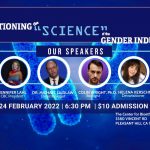I began teaching moral theology (Christian ethics) at The Catholic University of America in September 1971. The major influential sources on which I relied were St. Thomas Aquinas, Germain Grisez, and the great Methodist theologian Paul Ramsey. At a time when the most influential Catholic moral theologians in the world-among them Richard McCormick, Joseph Fuchs, Louis Janssens, Charles E. Curran-denied that there are any actions that are intrinsically evil and prohibited by absolute moral norms admitting of no exceptions, this Protestant Christian ethicist stoutly defended the truth that some acts are indeed intrinsically evil and prohibited by absolute moral norms, among them the intentional killing of innocent human persons, among them unborn human babies.
I first met this friendly Mississippian during the Christmas holidays of 1971, at a conference sponsored by the American Academy for the Advancement of Science in Washington DC on “new reproductive technologies.” Patrick Steptoe of England, who with Robert Edwards had been pioneering efforts to bring to birth a child conceived in vitro, gave a talk championing these new technologies (be it noted that Steptoe and Edwards did not succeed in their efforts until July 25 1978 when Louise Brown was born-ironically ten years to the day after Pope Paul VI signed his encyclical Huimanae vitae in which he affirmed that “there is an inseparable connection willed by God and not licit for man to break on his own initiative between the unitive and procreative meanings of the conjugal act”)..
In a brilliant critique of the new technologies, later published as “Shall We ‘Reproduce’?” in the Journal of the American Medical Association 220 (June 5, 1972), Paul argued that “making babies” by the use of such technologies is inherently evil inasmuch as such use constitutes unjust experimentation on a future, possible child. He rightly insisted that we cannot even come to know whether damage will be done to this child unless we are willing to inflict damage to find out.
Recent research has, as a matter of fact, shown clearly that children conceived by means of in vitro fertilization and other new reproductive technologies are exposed to significant risks to which babies conceived “naturally” are not. For instance, one study found that more than 3% of low birth weight infants and more than 4% of very low birth weight infants were conceived by the use of the new reproductive technologies. This is six times as high as would be expected on the basis of the frequency of the use of these technologies (cf. Laura A. Schieve, Susan F. Meikle et al. “Low and Very Low Birth Weight in Infants Conceived with the use of Assisted Reproductive Technology,” The New England Journal of Medicine, 346 (2002) 731-737. Another study showed that the Beckwith-Wiedemann syndrome (BWS) was four to six times as prevalent among children who had been conceived as a result of ART as it was among those conceived naturally. This syndrome can cause the tongue and internal organs to be abnormally large, causing high birth weight. It also increases the risk of certain cancers including Wilm’s tumor, hepatoblastoma, and neuroblastoma. (cf. Michael R. DeBaum., Emily L. Niemitz, and Andrew P. Feinberg, “Association of In Vitro Fertilization with Beckwith-Wiedemann Syndrome and Epigenetic Alterations of LIT1 and H19,” Am. J. Hum. Genet. 72 (2003) 156-60).
Unlike modern dualists, whether Catholics like McCormick and Curran or Protestants like Joseph Fletcher and James Gustafson, Ramsey clearly recognized that the human body is integral to the human person. It is not, as these descendants of Descartes hold, a privileged instrument of the person, whom they conceive as a conscious subject aware of itself as a self and capable of relating to other selves. On their understanding, for instance, a living member of the human species may not in fact be a person, since some living members of the human species, for instance unborn babies or newborns, and individuals alleged to be in the “persistent vegetable state,” are not persons because they are not aware of themselves as selves and capable of relating to other selves. Thus intentionally killing them is not to kill a person-who alone is the subject of rights-but rather to kill a non-personal organism. This understanding of the person is, as Pope John Paul II emphasized in his 1995 encyclical Evangelium vitae, one of the roots of the culture of death. There he wrote he wrote that the culture of death is rooted in the “mentality which tends to equate personal dignity with the capacity for verbal and explicit, or at least perceptible communication,” i.e., the “mentality which carries the concept of subjectivity to an extreme and even distorts it, recognizing as a subject of rights only the person who enjoys full or at least incipient autonomy and who emerges from a state of total dependence on others”(no. 19}.Ramsey, like John Paul II and others firmly accepts the teaching of Scripture and of sound philosophical reasoning that a human person is a bodily being as his many writings on bioethical issues amply demonstrate.
I became interested in modern reproductive techniques in 1968 when I read Gordon Rattray Taylor’s 1968 book The Biological Timebomb. At the time I was working as an editor of philosophical/theological works for the Bruce Publishing Company of Milwaukee and my wife was expecting our sixth child. Her doctor, a great pioneer in natural childbirth and natural family planning, John Brennan, and I in fact discussed with disgust the “new ‘reproductive’ technologies” in the delivery room as my wife was preparing to give birth to our daughter Susan, born October 5 1968, a belated happy anniversary present, as we had celebrated our 11th anniversary on October 4.
After I began my academic career in 1971 I soon introduced a course in bioethics, making liberal use of Paul’s wonderful studies and of Grisez’s great work. In 1977 I published a book on bioethical issues, Human Existence, Medicine and Ethics: Reflections on Human Life and in the following years I published widely in this area, opposing in particular the dualistic anthropology that sharply distinguished between being a living human being and being a person, a distinction central to the acceptance of abortion, infanticide (sometimes achieved by withholding/withdrawing nonburdensome life-preserving treatments as chosen means of bringing death about), euthanasia, and in more recent years human embryonic stem cell research. Indeed the debate over such research clearly exposes the dualistic anthropology at the heart of the culture of death and contemporary bioethics in this country. Those clamoring for getting stem cells from human embryos acknowledge that the entities whose lives must be taken to obtain these cells are human beings. Were the embryos in question panda embryos or chimpanzee or dolphin embryos those clamoring for their stem cells would be heartily condemned for daring to kill members of these great animal species.
A key argument drawn from revelation against such dualism is the following.. When God created man, he did not create a “conscious subject aware of itself as a self” to which he then added a body as an afterthought. Rather, when God created man in his own image “male and female he created them” (Gen 1.27), i.e., beings of flesh and blood. Moreover, when the Uncreated Word of God, the second person of the Blessed Trinity, became God’s “created word,” man, he became flesh (ho logos sarx egeneto; Jn 1.14) and he remains flesh today. Moreover, God’s “created words,” living men and women, are, like the Uncreated Word who was “begotten, not made,” meant to be begotten in an act of bodily union between a man and a woman who have given themselves to each other in marriage and by doin
g so have made themselves fit, as non-married persons have not, to “welcome life lovingly, nurture it humanely, and educate it in the love and service of God and neighbor=or.” They are not to be “made” in the laboratory, for they are persons equal in dignity as persons to their parents; they are not “products,” inferior to their producers and subject to quality controls.
A brief but cogent philosophical argument against the dualism that sharply distinguishes between the “person” and his or her body (found in Aristotle, Aquinas and others) goes this way:
Major: Eating, reproducing, and sensing, among other kinds of acts, are bodily acts, that is, acts done by a bodily being making use of bodily organs.
Minor: The same being that eats, reproduces, and senses also engages in acts of understanding.
Conclusion: Therefore, the being that engages in acts of understanding is a bodily being, not some other being using a body as an instrumental good extrinsic to itself.
Moreover, when we break our arms we do not say that we have damaged our instruments but rather that we have hurt ourselves. I am currently revising my book Catholic Bioethics and the Gift of Human Life, published in 2000. Thank you
CBC is proud to announce Dr. William E. May as the winner of the 2007 Paul Ramsey Award. Dr. May is the Michael J. McGivney Professor of Moral Theology at the John Paul II Institute for Studies on Marriage and Family in Washington, D.C., where he has been teaching since 1991. In 2003 Pope John Paul II appointed May as a consultor to the Congregation for the Clergy a title bestowed by the Vatican in recognition of his work. One of his most recent books is Catholic Bioethics and the Gift of Human Life (2000).
Author Profile
Latest entries
 Sperm DonationMarch 15, 2022Venus Rising with Edward Saulig: Reflections of a Sperm Donor
Sperm DonationMarch 15, 2022Venus Rising with Edward Saulig: Reflections of a Sperm Donor BioethicsMarch 13, 2022Dr. C. Ben Mitchell: 2022 Ramsey Award Winner
BioethicsMarch 13, 2022Dr. C. Ben Mitchell: 2022 Ramsey Award Winner #BigFertilityMarch 10, 2022Documentary Explores One Woman’s Journey through Egg Donation
#BigFertilityMarch 10, 2022Documentary Explores One Woman’s Journey through Egg Donation BioethicsMarch 9, 2022Questioning the “Science” of the Gender Industry
BioethicsMarch 9, 2022Questioning the “Science” of the Gender Industry

